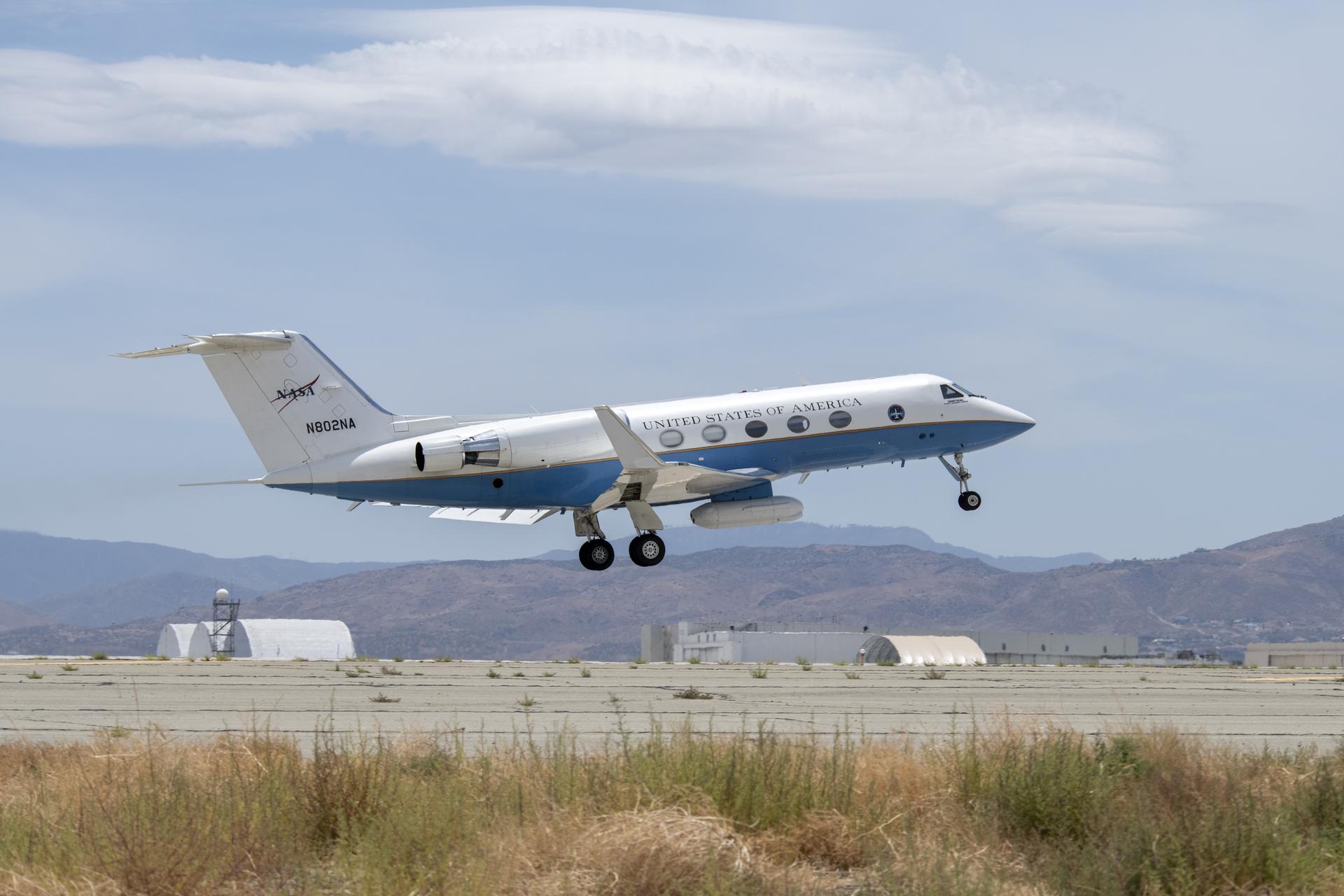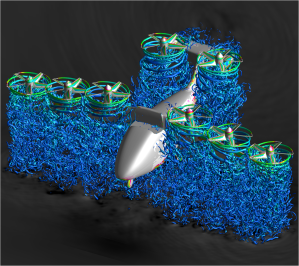
NASA’s Armstrong Flight Research Center operates a C-20A, a military version of the Gulfstream III business jet, as an airborne science research aircraft for a variety of geophysical research missions. The aircraft was extensively modified and instrumented for the role, including installation of a sophisticated synthetic aperture radar in an underbelly pod, a self-contained on-board DCAPS (Data Collection and Processing System), and the PAA (Platform Precision Autopilot) system that enables the aircraft to fly repeat passes over a target within a 15 foot diameter “tube” of the original flight path.
The twin-turbofan aircraft provides long-term capability for efficiently conducting airborne environmental science missions for NASA, other government agencies, academia, and private industry.
UAVSAR (Uninhabited Aerial Vehicle Synthetic Aperture Radar)
The UAVSAR is a sophisticated system developed by NASA’s Jet Propulsion Laboratory (JPL) in Pasadena, California. Built initially for carriage by remotely piloted aircraft, the UAVSAR is
mounted on the C-20A in a specially designed pod that will be interoperable with uncrewed aircraft in the future.
The UAVSAR uses a technique called interferometry to detect and measure very subtle deformations in Earth’s surface. The sensor is designed to gather data for geological studies on earthquakes and volcanoes, ice and glacier movement supporting climate change studies, biological studies supporting ecology and carbon cycle science, and oceanography research.
Since the UAVSAR was installed in 2007, the aircraft has flown more than 4,500 flight hours for data collection.
To support installation of the UAVSAR pod, the C-20A airframe was structurally modified to incorporate a MAU-12 ejector rack on the bottom of the fuselage. This unique modification will remain available for use by future projects. The modified rack, with power and data connectivity to equipment in the aircraft cabin, can accommodate various external pods to carry specialized science instruments.
DCAPS (Data Collection and Processing System)
NASA Armstrong’s C-20A airborne science research aircraft is equipped with a self-contained on-board in-strumentation system that allows for automated configuration setups to reduce required engineering support for each mission. Primary and backup systems assure mission reliability, with the backup system available for use concurrently as a parallel system when needed. The DCAPS is designed to allow easy upgrades, addition of add-on systems for expansion, and can operate in autonomous and manual modes.
The custom DCAPS installed on the C-20A was developed to enable processing, distributing, displaying, and archiving aircraft flight data and customers’ experimental data in real time.
PPA (Precision Platform Autopilot)
The aircraft features a high-precision autopilot designed and developed by engineers at NASA Armstrong. The PPA guides the aircraft using a kinematic differential Global Positioning System developed by JPL and the aircraft’s inertial navigation system to enable it to fly repeat paths to
an accuracy of 15 feet or less. With the precision autopilot engaged, the synthetic aperture radar can acquire repeat-pass data that can measure land-surface changes within millimeters.
Other Modifications
In addition, the aircraft features a video collection and distribution system and several satellite communications systems, including airborne internet connectivity, satellite phones/texting hotspots, and an upgraded 115VAC, 60HZ electrical power system.
Aircraft Description
NASA Armstrong’s C-20A was obtained from the U.S. Air Force in September 2002. It bears TN (tail number) 802 and is based at Armstrong’s Building 703 in Palmdale, California.
The Gulfstream III/C-20A aircraft were built by Gulfstream Aerospace Corp. In the aircraft’s commercial version, the G-III’s basic role is as an executive business aircraft that can carry up to 12 passengers. The C-20B version, flown by the Air Force, serves in a similar capacity for high-level government and military officials.
The C-20A’s maximum takeoff weight with full fuel and passengers or cargo is 69,700 pounds. The unmodified airplane weighs about 38,000 pounds empty. The aircraft has a wingspan of approximately 7 feet, is 83 feet long, and 24 feet tall. Normal cruise for the aircraft is 527 mph (459 knots) and its top speed is 576 mph (501 knots; Mach 0.85). The C-20A’s maximum operating altitude is 45,000 feet and it has a range with a full load of passengers or equipment of about 3,400 nautical miles (4,000 statute miles).
Two Rolls-Royce Spey Mark 511-8 turbofan engines, each producing 11,400 pounds (5,170 kilograms) of thrust, power the aircraft.



























